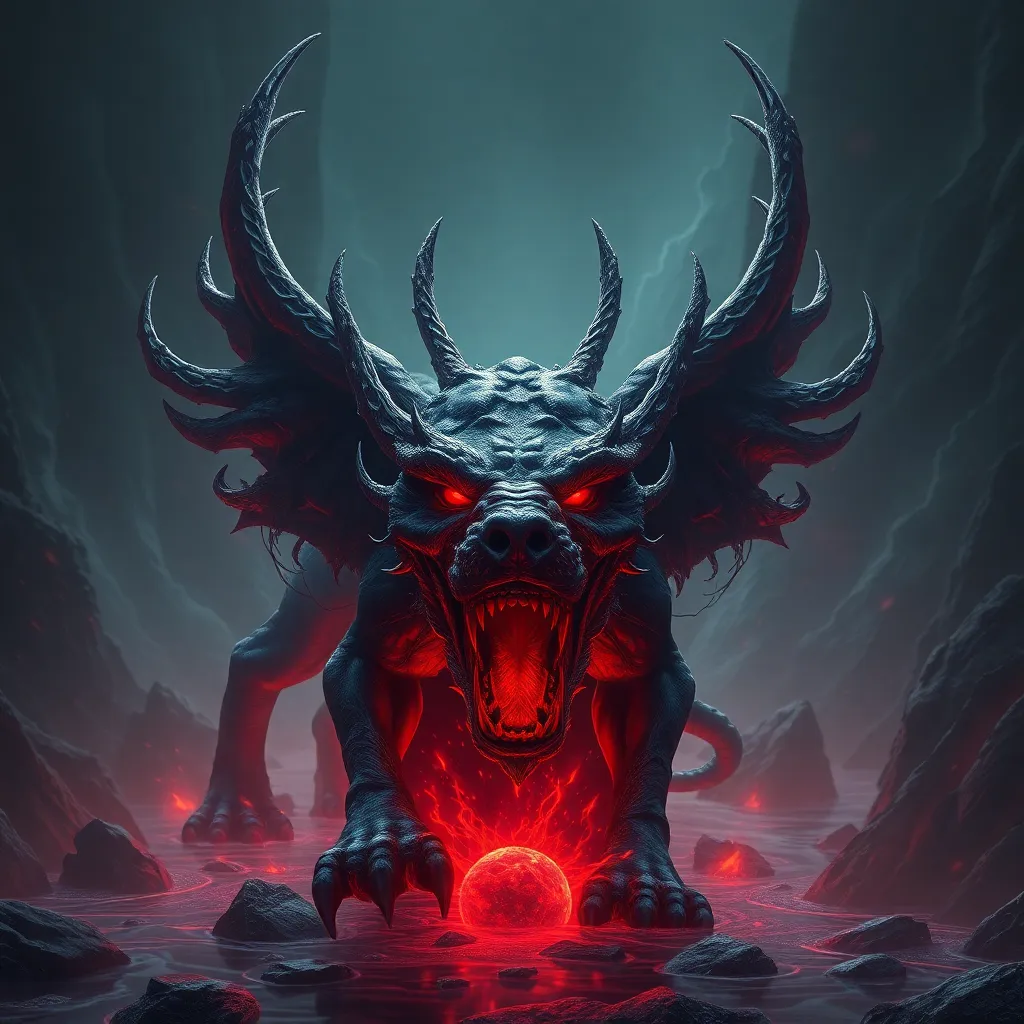Beyond the River Styx: Unveiling the Secrets of Cerberus and the Underworld
I. Introduction
Greek mythology is a rich tapestry of stories and characters, steeped in themes of heroism, morality, and the mysteries of existence. Central to these narratives is the Underworld, a complex realm that embodies the Greek understanding of death and the afterlife. Among its many inhabitants, Cerberus, the fearsome three-headed dog, stands out as a significant figure, embodying the transition from life to the afterlife.
This article aims to delve into the secrets of Cerberus and the Underworld, exploring their roles in mythology and their continued relevance in modern culture.
II. The Underworld in Greek Mythology
The Underworld, often referred to as Hades, is a shadowy domain where souls journey after death. It is not merely a place of punishment but a complex structure with various realms:
- Elysium: A paradise for the virtuous and heroic.
- Tartarus: A deep abyss used as a dungeon of torment for the wicked.
- Asphodel Meadows: A neutral zone for the ordinary souls.
At the heart of this realm lies the River Styx, a significant boundary between the living and the dead. Souls were ferried across this river by Charon, the boatman, emphasizing the importance of proper burial rites in Greek culture.
Several key figures oversee the Underworld, including:
- Hades: The god of the Underworld and ruler of the dead.
- Persephone: Queen of the Underworld, who symbolizes seasonal cycles.
- Thanatos: The personification of death.
III. Cerberus: The Guardian of the Underworld
Cerberus is often depicted as a monstrous creature with three heads, a serpent’s tail, and a mane of snakes. His fearsome appearance serves as a deterrent to those who would attempt to escape the Underworld.
According to myth, Cerberus is the offspring of Echidna and Typhon, making him a part of a lineage of powerful and fearsome creatures. His primary role is to guard the gates of the Underworld, ensuring that no soul can leave and that no living person can enter without permission.
IV. The Symbolism of Cerberus
Cerberus is a multifaceted symbol in Greek mythology, representing both the inevitability of death and the protection of the sacred boundary between life and death. His duality can be seen as:
- Protector: As the guardian of the Underworld, Cerberus ensures that the dead remain undisturbed.
- Threat: His ferocity serves as a reminder of the dangers that lie in the afterlife.
Throughout history, Cerberus has been depicted in various art forms, from ancient pottery to modern films, often representing the fears and mysteries surrounding death.
V. Myths and Legends Involving Cerberus
Cerberus plays a pivotal role in several myths, most notably in the Twelve Labors of Heracles. In this legendary tale, Heracles is tasked with capturing Cerberus and bringing him to the surface world, demonstrating his strength and bravery.
Other notable interactions include:
- The encounter with Orpheus, who charms Cerberus with music to retrieve his beloved Eurydice.
- The story of Aeneas in the Aeneid, where he must appease Cerberus to pass through the Underworld.
Variations of Cerberus can also be found in different mythological traditions, often representing similar themes of guardianship and the afterlife.
VI. The Underworld’s Influence on Modern Culture
In contemporary culture, Cerberus continues to captivate the imagination. He appears in numerous works of literature, film, and art, often symbolizing the struggle against mortality or the journey through death.
Some examples include:
- The character of Cerberus in video games like “God of War” and “Hades,” where he serves as both an enemy and a companion.
- Literary references in works like Dante’s “Inferno,” where Cerberus guards the gluttonous souls.
The themes surrounding the Underworld have also influenced contemporary discussions about death and the afterlife, reflecting society’s evolving beliefs and fears.
VII. Unraveling the Mysteries: Cerberus and the Underworld Today
The fascination with Cerberus and the Underworld persists in modern society, often reflecting deeper psychological interpretations of death. Cerberus represents the fears surrounding mortality and the unknown, serving as a metaphor for the challenges we face in confronting our own mortality.
In today’s society, the Underworld remains relevant as a symbol of the unknown and a reminder of the transient nature of life. The myths surrounding Cerberus encourage us to reflect on our own lives, relationships, and the legacy we leave behind.
VIII. Conclusion
Cerberus holds a significant place in Greek mythology and culture, serving as a gateway to understanding the mysteries of the Underworld. His dual role as a protector and a threat exemplifies the complexities of life and death.
As we explore the enduring mysteries of the Underworld, we recognize that these ancient stories continue to resonate today, bridging the gap between myth and our modern understanding of existence and mortality.




